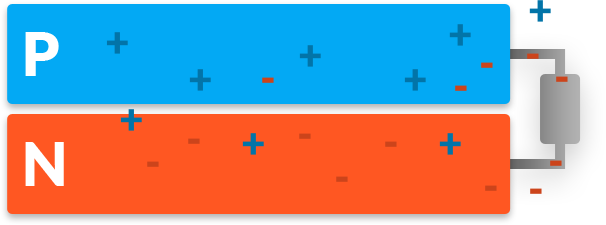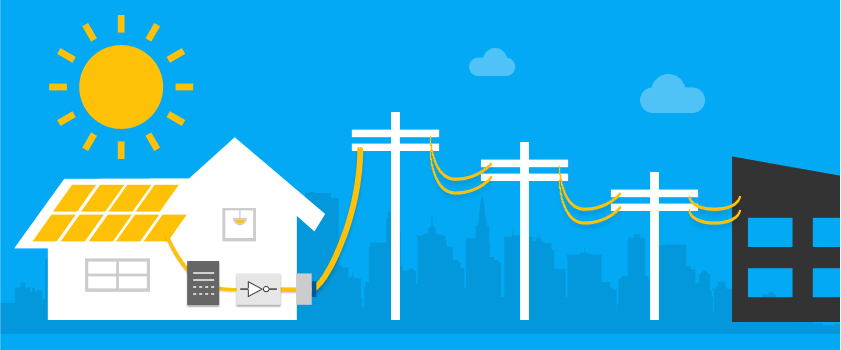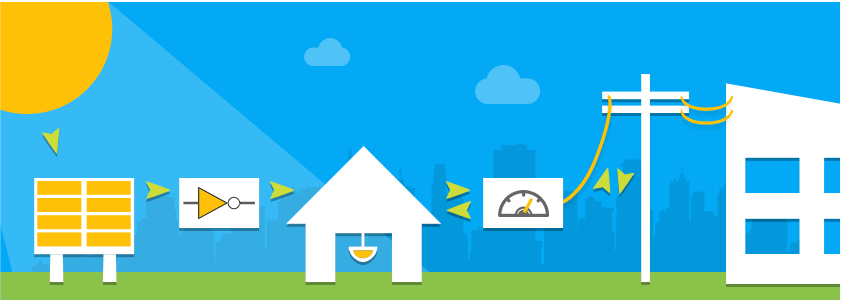In a single hour, the sun bathes Earth with enough solar energy to meet the world’s power needs for an entire year. Not only is sunlight the most abundant energy source available, it’s also the cleanest. So how can we turn this endless supply of sunbeams into useful electricity? The answer lies in the photovoltaic (PV) effect – the phenomenon of converting solar energy into electrical current. Solar cell (also known as PV cell) development has come a long way, and with the increasing demand for clean energy, the future is looking bright for this renewable energy source.
The Science Behind Solar
Look closely at a solar panel and you’ll see that it is actually composed of much smaller photovoltaic cells, also known as solar cells. These cells are made up of silicon, the second most abundant element in the Earth’s crust. Aside from many other types of products, silicon is used in almost all electronic devices (think “Silicon Valley”).
POWER GENERATION
Sunlight is composed of packets of energy known as photons. When photons hit the photovoltaic cell, electrons get knocked loose from their electron/hole bonds and a flow of electrons begins.

current of electricity – to power anything by adding a load to the circuit. The higher the rate of photons striking the cell, knocking electrons loose, the more power it can produce.
The Solar-Powered Home
Solar cells can be assembled into panels, and then into arrays, to meet a wide range of power needs. From the world’s largest solar farm in India, producing 600 megawatts (MW) of power, to the small strips of solar cells used in toys and calculators – solar energy is a flexible technology. Despite its many benefits, solar still faces challenges, including the cost of installation and manufacturing. Nevertheless, residential solar installation is on the rise. The U.S. Department of Energy states more than 2 millions homes are utilizing solar energy in 2019. And, if the industry can lower solar costs from today’s levels, the number of solar is projected to increase to almost 4 million homes by 2020.

Electrical Distribution Panel: This panel provides electricity to all of the homes’ circuits.
Net Metering: Selling your Extra Energy
Nationwide interest in rooftop solar panels and other on-site power sources continues to grow. When these distributed generation (DG) systems first came to the market years ago, many states approved net metering – a billing system in which solar panels or other renewable energy generators are linked to a public-utility power grid. If the solar panels end up generating more power than what is used, the surplus electricity is transmitted onto the grid. Customers are credited for any excess electricity generated and sold to the local electric company through the grid. The rate at which they are credited varies.

A Kilo-what?
Once solar panels turn sunlight into electricity, it’s important to understand just how much electricity its being produced and how to translate that into what appears on your utility bill. Here are a few definitions explaining the essentials of electric units:
Kilowatt (kW)The rate at which power is generated or consumed at a given moment
Kilowatt Hour (kWh)Measurement of energy used over a specific period of time.
So, your electricity bill combines how quickly the electricity is used (watts) with the amount of time it is used (hours) to calculate how much energy you used over the billing period.
U.S. Household Energy Use
In 2018, the average annual electricity consumption for a U.S. residential utility customer was 10,972 kWh. Source: U.S. Energy Information Administration
- Space cooling13% 1,421 kWh
- Lighting11% 1,202 kWh
- Water heating9% 984 kWh
- Space heating9% 984 kWh
- Refrigeration7% 765 kWh
- Televisions and related equipment7% 765 kWh
- Clothes dryers4% 437 kWh
- Furnace fans and boiler circulation pumps3% 328 kWh
- Computers and related equipment2% 219 kWh
- Cooking2% 219 kWh
- Dishwashers2% 219 kWh
- Freezers2% 219 kWh
- Clothes washers1% 109 kWh
- Other Uses*27% 2,951 kWh
*Includes small electric devices, heating elements, and motors not listed above. Does not include electric vehicle charging. Source: EIA, Annual Energy Outlook, 2015
How The Grid Works
Understanding the path of electricity from the power plant to your home
From the moment the coffee machine starts brewing your cup of morning java until you switch off the television at night, you’re using electricity. If you have solar panels, you may be using energy produced right on your roof, but otherwise (or at night) that electricity is probably coming from hundreds of miles away, traveling over mountains, rivers and forests, before it gets to your neighborhood. Here’s a look at how The Grid makes that happen:

Interested in knowing where all that power is being generated across the United States? The U.S. Energy Information Administration has a powerful map that reveals the energy infrastructure across the country, from coal mines to solar and hydroelectric power plants to oil pipelines.
U.S. Energy Mapping SystemGoing Off the Grid with Solar
While most people like the idea of flipping a switch and knowing the lights will turn on, that utility-company convenience comes at a price: global warming, energy dependence and upward-trending electricity rates. But what if you could keep the lights on while cutting the proverbial power cord? It’s called “off grid” and it is possible. For most people the initial start-up costs are prohibitive, plus the maintenance is more than they want to manage. But for those hearty souls who want to consider going off grid, here’s an explanation on how it can work with solar panels:

While panel prices and battery pack costs are dropping significantly as technology improves, all that sun power still doesn’t come cheap. Solar panel kits can range anywhere from a few thousand dollars to power a small cottage minimally to $50,000 and up for a system that will keep the lights on and the refrigerator running all night.


